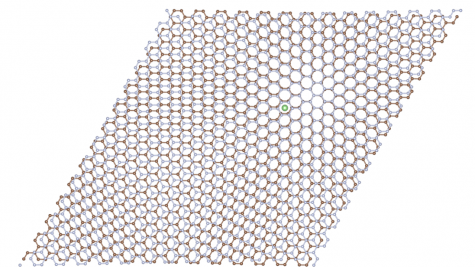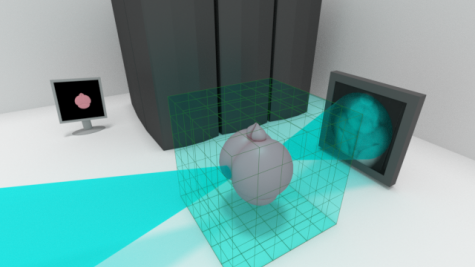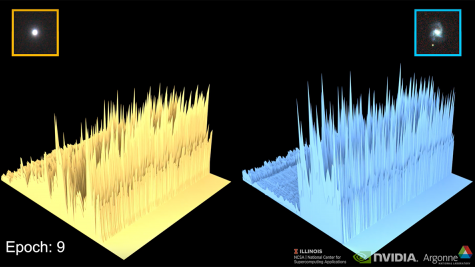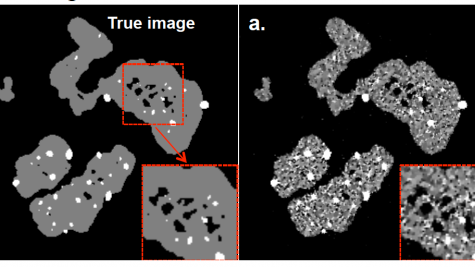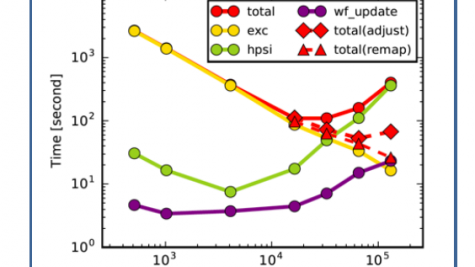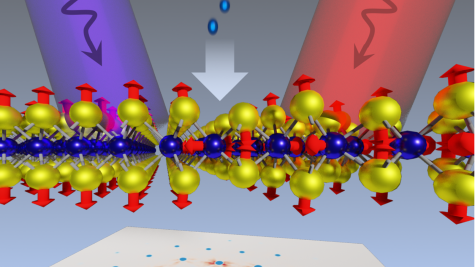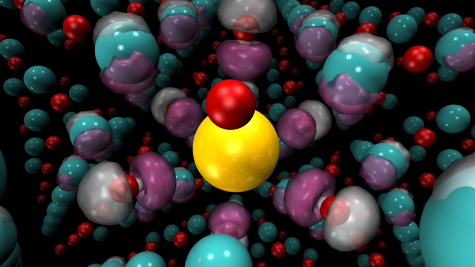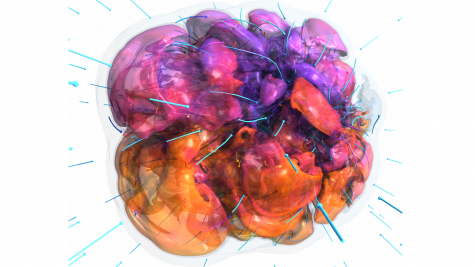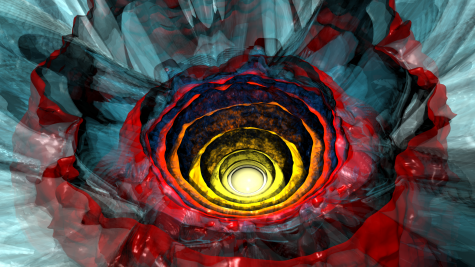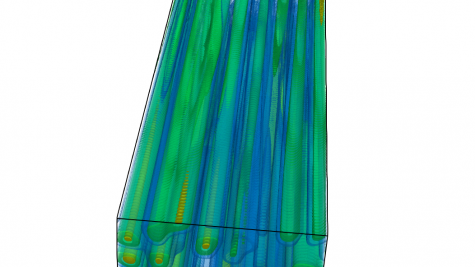ALCF projects cover many scientific disciplines, ranging from biology and physics to materials science and energy technologies. Filter ongoing and past projects by allocation program, scientific domain, and year.
Field-Reversed Configuration Stability and Transport
Researchers from TAE Technologies Inc. will use DOE supercomputing resources to provide theory support for the company's existing C-2W fusion plasma experimental device. The project will also contribute to the current effort to design TAE’s next-step fusion device, which will be a reactor-scale prototype designed to demonstrate the ability to achieve fusion relevant conditions.
Variable-Resolution Earth System Modeling of the Cryosphere with E3SM
This project supports the continued development of DOE's Energy Exascale Earth System Model (E3SM), a state-of-the-art fully coupled model of the Earth's climate including important biogeochemical and cryospheric processes. In particular, the team will use DOE supercomputing resources to advance the development, testing, and simulations of the E3SM v2 Cryosphere campaign.
Data-Driven Molecular Engineering of Advanced Functional Materials
This project will develop data-driven materials-by-design capabilities to accelerate the discovery of new materials for photovoltaic and quantum optical sensing applications. The team will achieve its goal by exploiting the latest advances in materials database auto-generation tools and data-mining, which harness artificial intelligence and machine learning.
Improving Direct-Drive Laser Fusion Predictive Capability with a Simulation Database
Researchers will carry out large-scale simulations of direct-drive Inertial Confinement Fusion (ICF) implosion experiments performed at the OMEGA laser facility. The simultation data will be used to test predictability and identify other possibilities for performance improvement through target or laser modifications.
Multiphase Flow Simulations of Reactor Flows
Researchers will utilize interface capturing methods and direct numerical simulation to perform state-of-the-art, large-scale simulations of reactor flows. Their work aims to help resolve existing challenges in predictive capabilities of two-phase flow, heat transfer, and plasma science.
High-Luminosity LHC Detector Upgrade Studies by the ATLAS and CMS Collaborations
To support the development of CERN's High Luminosity LHC (HL-LHC) upgrade, researchers will produce simulated data samples that will be highly instrumental in the creation of new reconstruction algorithms for the ATLAS and CMS detectors.
Enabling Resilient and Portable Workflows from DOE’s Experimental Facilities
This ALCC project will enable research into experimental and observational data workloads, which differ from the traditional simulation workloads that run at large-scale computational facilities. The team's work will help define the architectural and technical roadmap for experimental and observational facility workflows running at DOE’s HPC facilities, expose the cross-facility policy challenges, and offer strategies to address them.
Machine Learning Magnetic Properties of Van der Waals Heterostructures
The discovery of two-dimensional ferromagnetic materials in 2017 ushered in a new era of studies of magnetic order. Using a data-driven approach, this project combines machine learning and high-throughput density functional theory calculations to study van der Waals materials and predict their magnetic and thermodynamic properties.
X-ray Microscopy of Extended 3D Objects: Scaling Towards the Future
This project aims to scale up a novel approach to beyond-pure-projection x-ray image construction to meet the challenge of high-resolution x-ray imaging beyond the PPA, benefitting not just cell and brain imaging but the full range of future nanoscale imaging activities at DOE light sources.
Deep Learning at Scale for Multimessenger Astrophysics Through the NCSA-Argonne Collaboration
Full realization of the goals of multimessenger astrophysics requires the resolution of outstanding computational challenges, which this project seeks to address through the development of algorithms that significantly increase the depth and speed of gravitational wave searches and that process terabyte-size datasets of telescope images in real-time.
Developing High-Performance-Computing Applications for Liquid Argon Neutrino Detectors
This project aims to use leadership computing resources to simulate and reconstruct neutrino interactions and the cosmic-ray backgrounds that contaminate the readout of liquid argon time projection chambers. It will also develop tools to enable fast reprocessing and quick turnaround times to optimize the performance of the reconstruction and the precision of detector simulations.
Dynamic Compressed Sensing for Real-Time Tomographic Reconstruction
This project aims to enable real-time compressed sensing tomography by developing a dynamic tomography framework that performs in-situ reconstruction as new data are collected.
Advanced Materials Characterization with AI-Informed Computation
Numerical simulations of the physical processes that occur in materials when they are excited with light are essential for the understanding and rational design of broad classes of materials. This project seeks to develop an AI-informed computational framework that integrates machine learning into existing workflows, thereby enabling the prediction of spectroscopic signatures of materials with fast turnaround.
Ultrafast Control of Functional Materials
This project leverages the Theta supercomputer to predict ultrafast function-property-structure relationships that dictate light control of emergent material properties in complex nanostructures composed of three classes of advanced functional materials: (1) layered-material heterostructures and magic-angle heterostacks; (2) novel chalcogenide perovskites; and (3) topological skyrmions superlattices.
Towards Predictive Simulations of Functional and Quantum Materials
This project focuses on the development, application, validation, and dissemination of empirical parameter-free methods and open-source codes to predict and explain the properties of functional materials for energy applications. To demonstrate a truly predictive and validated framework, it performs calculations on complex materials that possess a wide spectrum of properties, benefiting both fundamental science and new electronics, energy storage, conversion, and quantum technologies.
Towards a Definitive Model of Core-Collapse Supernova Explosions
Core-collapse supernovae dramatically announce the death of massive stars and the birth of neutron stars. This multi-year INCITE project addresses whether and how 3D supernova explosion models differ from their 2D counterparts.
Radiation Hydrodynamic Simulations of Massive Stars with Rotation
This work aims to advance our understanding of the physical mechanisms that drive the large mass loss rate for Wolf-Rayet (WR) stars—stars that are hotter and typically have a higher Eddington ratio than the massive stars studied in previous INCITE allocations.
PLASM-IN-SILICO: HPC Modeling of High-Intensity Laser-Solid Interaction
This project aims to show, in silico and using massively parallel pseudo-spectral particle-in-cell simulations, that relativistic plasma mirrors can provide a simple and common elegant solution to three long-standing challenges of ultrahigh-intensity (UHI) physics.
Petascale Simulations of Kinetic Effects in IFE Plasmas
This work studies the kinetic evolution of laser-plasma instabilities on meaningful spatial and temporal scales directly relevant to various inertial fusion energy (IFE) scenarios. Using the popular particle-in-cell code OSIRIS, the research team is performing fully kinetic simulations that will help advance research at the National Ignition Facility and other IFE experiments.
High-Speed Turbulence with Shocks over Non-Adiabatic and Flexible Walls
This project investigates how supersonic wall-bounded turbulent flows are affected by the thermal wall boundary condition and how they interact with flexible walls. It will also consider the interaction between supersonic turbulent boundary layers and shockwaves in the presence of rigid and flexible walls, and will create highly resolved reference data for two such cases.
